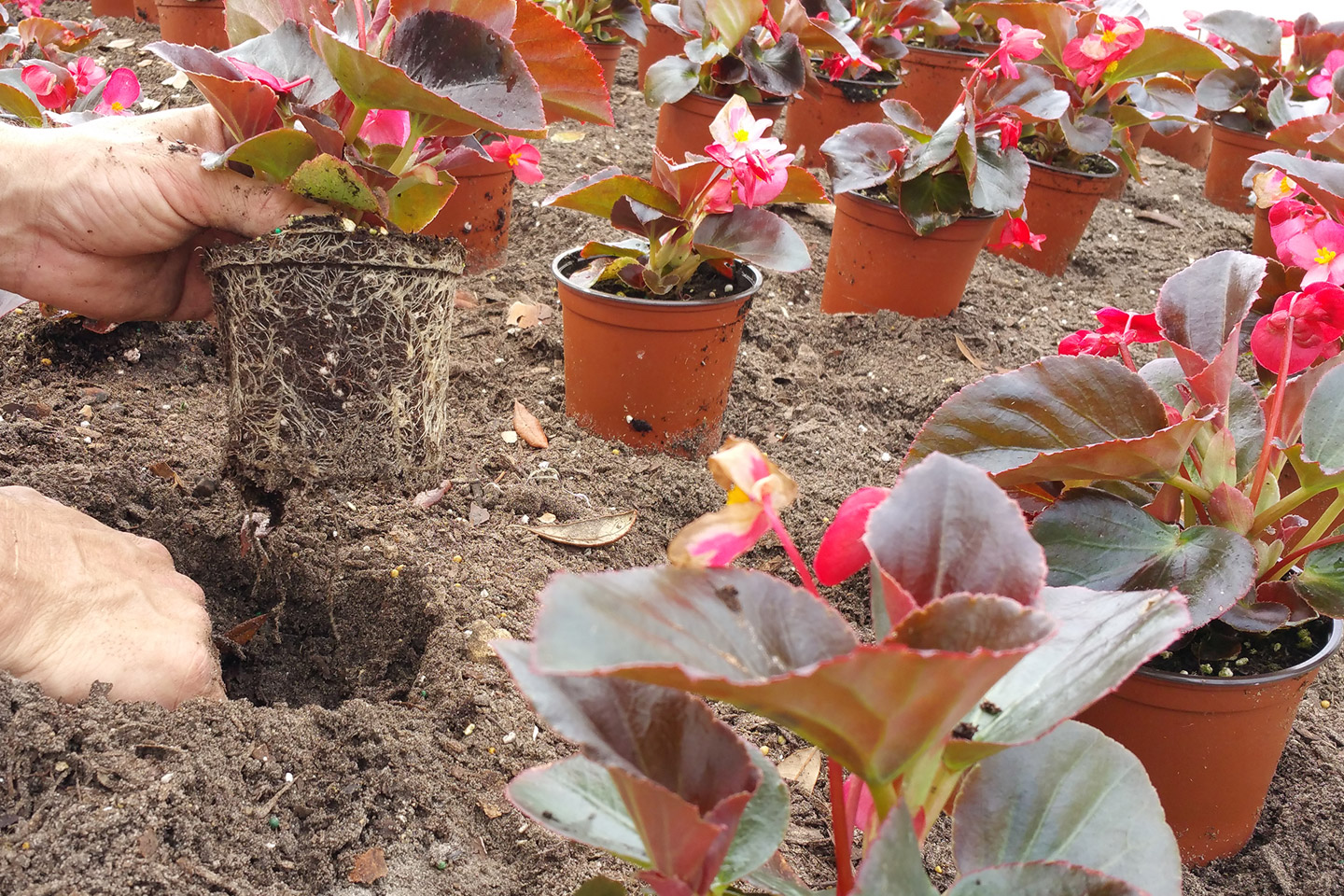Florida's Flowering Perennials - Sit Down with CEPRA
Seasonal, annual flowers, ornamental shrubs, and ground covers dominate our landscape's color displays. A frequently overlooked opportunity is the use of perennial plants in our landscapes. These perennials can excite the landscape with their colorful blooms and versatility.
A perennial is a plant that can live for two or more growing seasons. When utilizing perennials, bed prep is essential. In our sandy soils, adding amendments to enrich the soil is necessary. Once planted, add a light layer of mulch to the beds, typically pine fines mulch, which will put a nice finishing touch on the bed.
In our frost and freeze-prone parts of Florida, these perennials may die back to the ground during the winter months but have the potential to rejuvenate themselves once warmer temperatures return. Properties with larger budgets will sometimes treat perennials as annuals and discard them at each season's end.
Here are some of our favorite flowering perennials that are sustainable and consistent performers in our Florida landscapes.
Black-Eyed Susan
Rudbeckia
Nine Rudbeckia species are native to and are found throughout Florida. "Black Eyed Susan" is the most common Rudbeckia and is ideally suited for butterfly gardens. Their nectar is an excellent food source for various butterflies and bees. Birds often eat the seeds.
Plant Black-eyed Susan's in a sunny landscape location that receives minimal shade. The soil needs to be well drained. Rudbeckia is not salt tolerant and has little tolerance to salty wind or direct salt spray.
They will display flowers characterized by brown centers surrounded by red, orange, yellow or golden petals. To promote blooming, remove the faded blossoms to encourage additional flower development. The plants flower best with regular moisture and will typically bloom from Spring to Fall.
The use of Non-native varieties of Rudbeckia is not recommended for long-term sustainability.
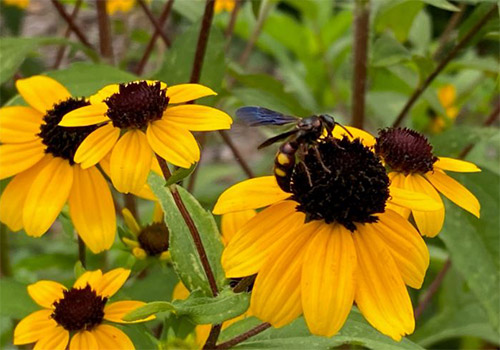
Black-Eyed Susan
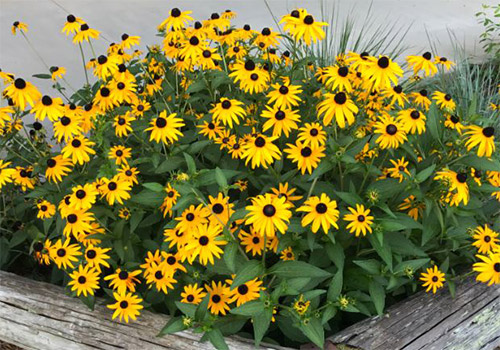
Rudbeckia
Mexican Bush Sage
Salvia Leucantha
Salvia leucantha is native to central and eastern Mexico. It is a bushy plant with evergreen foliage from fall to spring. It is typically used in mass plantings or as a centerpiece in a container. Even when not in bloom, this plant provides beautiful texture and color in the landscape. It is a quick grower that can reach heights of 3-4 feet and a spread of 4-5 feet. Mexican Bush Sage prefers a bright location in the landscape with well-drained soil, and the plants will perform best when supplemental irrigation is provided.
The blooms are a bright lilac purple and have a fuzzy appearance. The blooms out of the calyx are white, making the flower spikes appear bi-colored. Mexican Bush Sage is a fantastic attractor of butterflies and hummingbirds. These plants are also resistant to deer damage.
In the winter, these plants can be damaged in non-frost-free areas or colder climate zones. In the spring, trim back the plant, regardless of whether the plant was damaged during the winter, to just 6-12 inches in height or all the way to the ground if cold injury occurred. Fertilize the Mexican Bush Sage each spring and again in late summer if plants become leggy and require pruning.
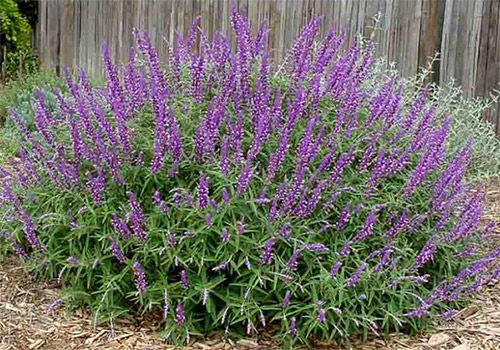
Salvia Leucantha

Salvia Leucantha
Starry Rosinweed
Silphium Astericus
This perennial is native to Florida and naturally occurs in flatwood and sandhills in the Panhandle and along the western central peninsula south to Lee County. The common name "rosinweed" refers to the gummy substance found in the stems. Native Americans chewed stems to clean their teeth and additionally, Rosinweed has a long history of medicinal uses in North America and Europe.
Starry Rosinweed will readily self-seed if left to its own devices and may die back in the winter, particularly in cold frost-freeze-prone locations. It will produce new foliage in the spring and can produce flowers from mid-spring through early fall. The plant stems can reach a height of 3-5 feet, and the plant width can become 2 feet across. The plants prefer well-drained soils, and when established, the plants should not need extra water, except extra-long times of drought.
Rosinweed needs to be in the full sun for optimum flowering. Typically, the flowers are 2 inches across with yellow ray petals and disks. These plants will bloom over a long period and can be cut back after flowering, but only remove the flowering portion of the plant, leaving the leafy stems behind. The bright, showy flowers attract butterflies, native bees, and other pollinators. Birds will feast on the plant's seeds.

Starry Rosinweed

Starry Rosinweed
Purple Coneflower
Echinacea Purpurea
This is a beautiful Florida native perennial that does not always produce purple flowers. When purchasing Purple Coneflower make sure that it is the Florida native. The native Florida variety will outperform all the out-of-state imposters.
Echinacea purpurea can grow into a three-foot-tall clump with flower blooms on tall stalks. This daisy-like flower has a compact center of disk florets ranging from green to yellow, orange to brown, surrounded by long lavender to purple ray florets. The flowers can stand 2 to 4 feet tall and will appear throughout the spring and summer.
The plants prefer well-drained sand, clay or loamy soil and can be planted in a full sun to partial shade location in the landscape. This plant has poor tolerance to salt spray or soil intrusion. The nectar of the Purple Coneflower attracts a variety of butterflies, bees and even hummingbirds. Birds and other wildlife eat the flower seeds.
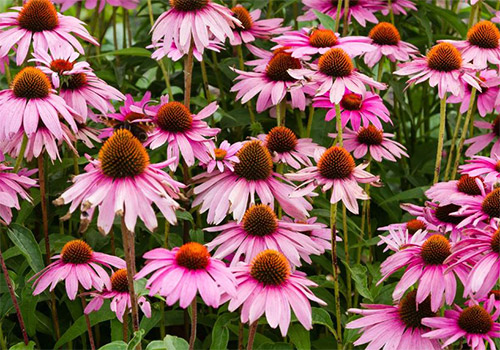
Purple Coneflower
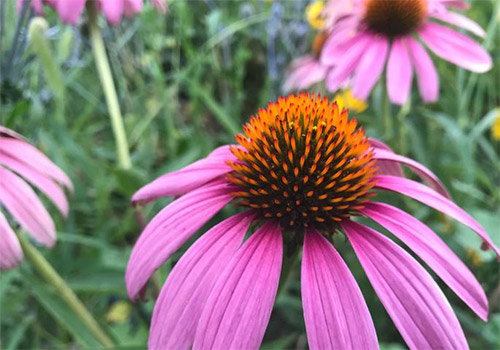
Purple Coneflower
Blanket Flower
Gaillardia Pulchella
Gaillardia pulchella is a sturdy perennial that is native to the southwestern United States. It has bright flowers that bloom throughout the summer and into the fall. These plants form rounded clumps from 12 to 24 inches in height and prefer a full sun location in the landscape. They can be planted anywhere in the state and will tolerate extreme heat, sun, sandy soils and even salt once established. Gaillardia will reseed itself in the landscape.
The flowers are two to three inches across and grow on long stems above soft, hairy leaves. Differences in colors and petal shape variations result from natural hybridization. The flowers are usually reddish-purple or orange-red with yellow tips but can also be sold in color.
Blanket Flower is an excellent nectar and pollen resource, and its brilliant blossoms are very attractive to butterflies.
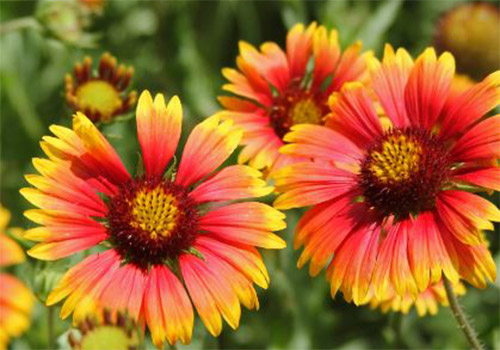
Blanket Flower
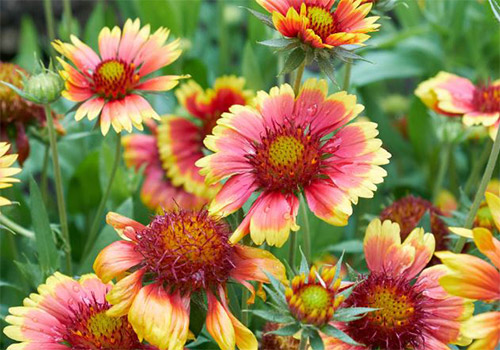
Blanket Flower
Beach Dune Sunflower
Helianthus Debilis
Beach Dune Sunflower occurs naturally along the Florida coast. Three sub species can be found in Florida. When planting, care should be taken to select the correct local subspecies to prevent hybridization. This plant will become damaged in parts of the state that receive frost and freezing temperatures in the winter but will return in the spring due to its ability to reseed itself.
Helianthus debilis is perfect for hot, dry sites. Plant this native in a full-sun location in the landscape, ideally in sandy or well-drained soil. Once established Beach Dune Sunflower is drought tolerant and can get by with little to no supplemental watering. Over-irrigation can actually slow the plants' growth and will promote disease. The plant is also an excellent choice for coastal areas due to its tolerance for salt in the soil and its ability to handle high levels of salt spray.
The flowers are 2 inches across, with daisy or sunflower-like flowers with yellow petals and brown centers. These bright flowers attract various pollinators, such as Butterflies, Bees and Moths, and birds eat their fruit and seeds. The plants bloom almost year-round, depending upon your location in the state. This spreading perennial plant is a prolific self-seeder that creates large clumps over time.
Beach Dune Sunflower has low nutritional requirements- and usually only needs one to two fertilizer applications a year. A fun fact is that the flower heads always follow the sun throughout the day.
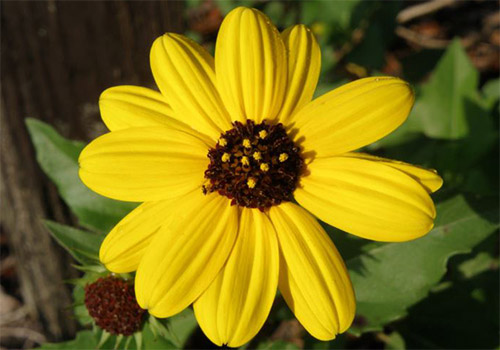
Beach Dune Sunflower
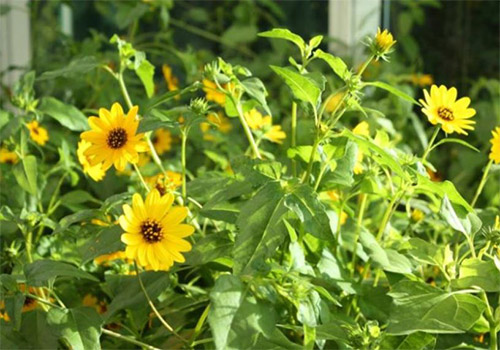
Beach Dune Sunflower
Tickseed
Coreopsis
This perennial is Florida's state wildflower. Twelve species are native to Florida, and many of them only occur in North Florida and the Panhandle. The most common species is Levenworth's Tickseed, which is almost entirely endemic to Florida.
Since Coreopsis comes in many species and varieties, everything depends upon the cultivar you choose, from the flower color to the plant size, its growth habit and its blooming time ranging from spring to summer and into early fall. Coreopsis flowers are daisy-like and are 1 to 2 inches wide.
The plants prefer a full sun location in moist, acidic soil. This moist soil allows for reseeding, which is essential in maintaining the plant. If the plants are cut back near the end of their bloom cycle, they will produce a second flush of flowers. Typically, this plant is used as a mixed wildflower and butterfly gardens component.
Coreopsis is commonly known as "Tickseed" because the plant's seed will affix itself to animals, and they resemble a small bug. Its vibrant flowers attract birds, rabbits, butterflies, and many other pollinators.
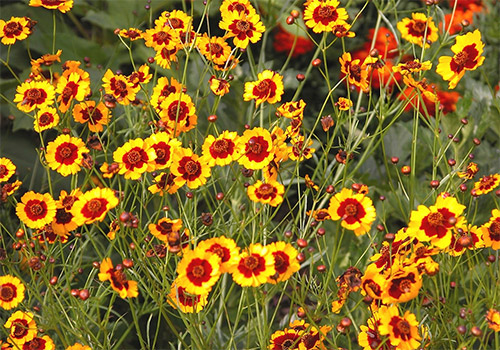
Tickseed
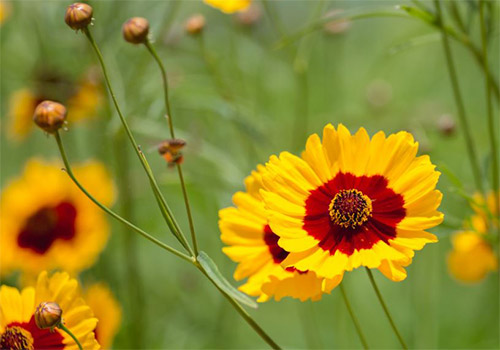
Tickseed
